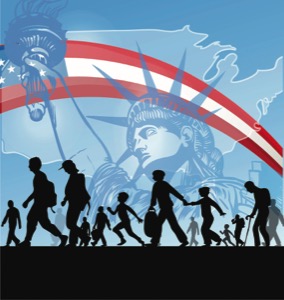
The story of Thanksgiving has evolved over the years as we have recognized that the tale taught in elementary school wasn’t true to the contributions of native peoples and their treatment by Europeans. At its best, our current Thanksgiving tradition reminds us that we are a nation of immigrants who owe at least a debt of gratitude to those who were already here.
The “immigrant” label, while correct, misses part of the story as well. Those ferried by the Mayflower weren’t simply looking for a better business opportunity. The pilgrims were looking for a place to practice their religion freely, in some cases avoiding persecution. They weren’t just immigrants, but refugees, a particularly salient point during our first Thanksgiving celebration under President Trump.
The border wall, attacks on DREAMers and Muslim ban(s) have owned the headlines, but the Trump administration has quietly rolled back the American tradition of helping refugees. In 2016, the U.S. welcomed almost 85,000 refugees, and President Obama hoped to allow 110,000 more in 2017. That number was cut after the election, and President Trump set a ceiling of 45,000 for the upcoming year. Just this month the Department of Homeland Security announced that over 50,000 Nicaraguan and Haitian refugees, many of whom have lived here for years, face deportation in the next 2 years. Over 50,000 Hondurans could face a similar fate after a six month reprieve.
Some of those refugees living in doubt are San Diegans. Thanks to the efforts of groups like the International Rescue Committee and Jewish Family Services, America’s Finest City has been a leader in welcoming refugees. Like the nation, San Diego organizations have seen their allotments cut, and even these lower numbers may not be met.
The executive branch is given considerable deference on refugee decisions, so a permanent fix may have to wait until 2020, but there are things we can do in the meantime. First and foremost, we can organize San Diego governments to better welcome our newcomers.
Call it an Office of Immigrant and Refugee Affairs or an Office of New San Diegans, we are one of the largest cities to not have a specialized office to assist our newcomers. When the City Human Relations Commissions (on which I serve) proposed one, a criticism was that it would be better placed in the County. Honestly, it’s past time for both. Health care, supplemental nutrition and other basic services may have a better nexus at the County, but refugees also need help navigating the police department and permitting offices run by the City.
Whatever the full truth of the Thanksgiving story, those early European refugees clearly got a more personal touch than a website and automated voicemail. We should be proud of San Diego’s commitment to refugees, but we have some work to do if we want to be not only America’s Finest, but Most Welcoming, City.











